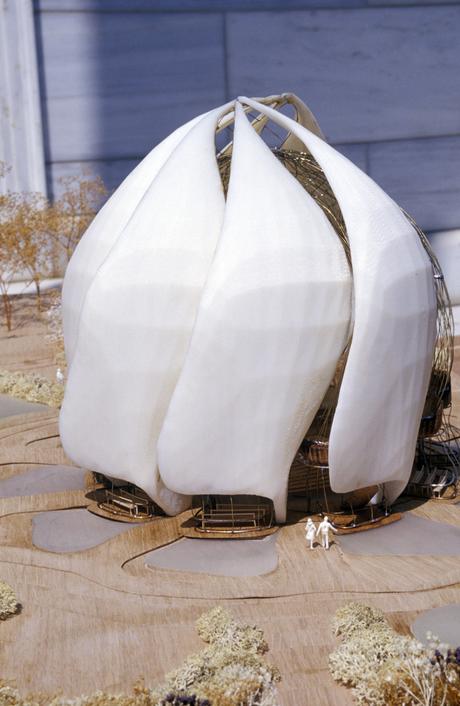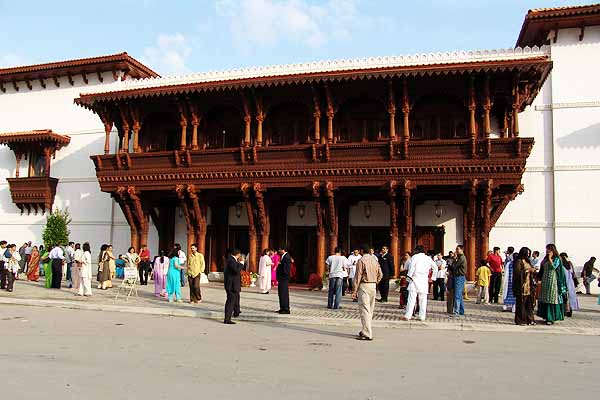From the Star:
It's big news, whoever you are
Hindu temple to transcend faith, atttract onlookers
Peter Kuitenbrouwer, National Post
Published: Thursday, July 19, 2007
Thistletown is abuzz over Sunday's opening of a grand mandir, or place of worship, that symbolizes the Hindu community's clout in Toronto.
"It's going to be a very, very big thing," says Sabita at Patel's Fine Jewellery, a fixture for 22 years on the corner of Albion Road and Islington Avenue, an area in Rexdale known historically as Thistletown. "The busloads of people are going to be coming down from the States and everywhere."
Albion Road, a plank toll road laid in 1850 to connect Weston to Bolton (the toll at that time was 1? for a traveller on horseback) cuts diagonally across Toronto's northwest corner from Thisltetown to the former village of Claireville.
Claireville is now home to big factories making car parts and scaffolding; across from the warehouse of Levi Strauss (Canada) is rising the remarkable Swaminarayan Mandir temple.
Around it this week, hundreds of workers are busy laying brick walkways. Five tents are up, each the size of several football fields, for Sunday's grand celebrations. While there are big Sikh temples, mosques and Hindu temples in Toronto, Swaminarayan Mandir is by far our city's most grand Hindu edifice in the style of the temples of India.
More typical of Hindu temples is the more modest Bharat Sevashram Sangha at 2017 Albion Rd. in Claireville, built in a converted two-storey farmhouse and notable mostly for bright orange curtains and hundreds of yellow and orange geraniums in the yard.
Orange is the colour of fire, explains Swami Pushkarananda ("swami" means teacher and "ananda" means happy), who comes to the door dressed only in orange pants and an orange scarf. He is a monk who came here from India 12 years ago, and now teaches meditation to the adults and yoga to the children. The swami says his food, a little rice and vegetables, costs about $1 a day. The growl of trucks, day and night, makes meditation difficult.
"It is good for society," he says of the impending opening of the Swaminarayan Mandir across Albion Road. And he encourages Torontonians to welcome his faith.
"In our Hindu religion, we like everybody," he says. "Colour does not matter. We are not looking at your body -- we are seeing your soul."
The new mandir, of course, is light years from this monk's aesthetic: it will symbolize the power of a group of Hindus who have amassed remarkable wealth in the New World.
"They have a lot of money, these people," says Massa Singh Randhawa, whose family owns Randhawa Jewellers, also at Islington and Albion. Although they are Sikhs, the Randhawas gave $1,500 this year to BAPS for a walk to raise money for the temple. (BAPS, the faith building the huge new temple, stands for Bochasanwasi Shri Akshar Purushottam Swaminarayan Sanstha, a worldwide religion founded in 1907 by the scholar Shastriji Maharaj.)
"People like to donate because the temple does a lot of good things for the people," Mr. Randhawa explains. Like most businesses around here, he also has a clear plastic BAPS box by the till; a man dressed in white comes regularly to empty the boxes and give out sweets, he says.
Others give more generously: One source here says he saw a donations sheet permitting donors to spend $75,000 to sponsor a tree or $50,000 to sponsor a pillar.
All folks around here are feeling pride as the temple nears its big opening day.
"I will go there if I have time because I would like to see it," says Pratibha Saihgpaul, a Punjabi Hindu who owns Rajdhani Sweets and Restaurant on Islington Avenue. Adds Ms. Patel, "No matter what happens, I'll tell you something: There won't be room for everyone at the opening."
pkuitenbrouwer@nationalpost.com
© National Post 2007
_________________________________________________________________
There is an article in the current issue of Canadian Architect which talked about Bahai Temple in Santiago - each piece of alabaster is machined robotically.
AoD














